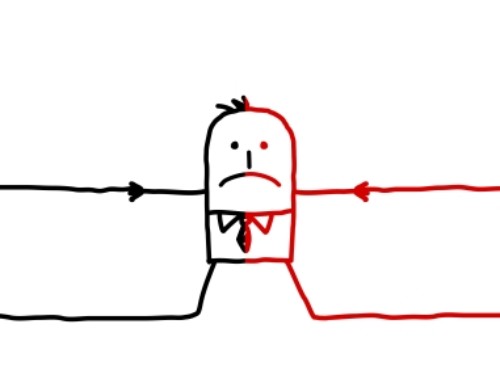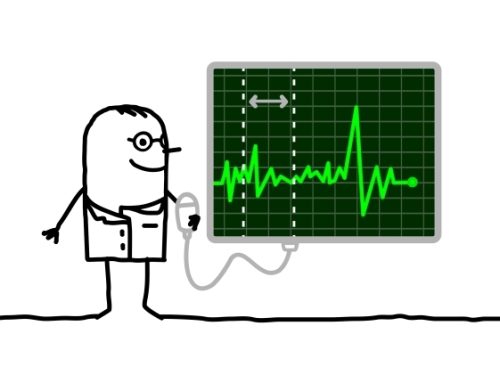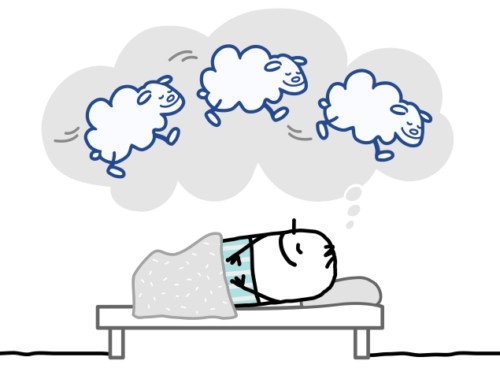In this article, I discuss how you can use principles from cognitive behavioural therapy to address obsessive compulsive disorder.
In my work as a Calgary psychologist and a Cochrane psychologist, I often see clients who suffer from obsessive compulsive disorder (OCD). This disorder is characterized by a person experiencing: (1) Obsessive thoughts—These are typically disturbing and overly negative beliefs which drive up their anxiety; and (2) Compulsive behaviours—These are repetitive and ritualistic actions the person performs to lower the anxiety created by their obsessive thoughts.
The compulsive behaviours typically work in the short run for the OCD sufferer by temporarily lowering the anxiety which stems from their obsessive thoughts. Unfortunately, these behaviours can be so time- consuming that they often interfere significantly with the person’s daily life.
In addition, the reduction in anxiety and relief from the disturbing thoughts which fuel it are only temporary. That is, the obsessive thoughts and the anxiety stemming from them inevitably return followed by the same compulsive behaviours with further interference with the person’s life.
Fortunately, there is a proven way to overcome this negative OCD cycle using cognitive behavioural therapy (CBT). CBT skills will help you to experience lasting relief from the anxiety created by the obsessions and decrease the use of compulsive behaviours. In the following sections, I will discuss how these CBT skills can be used to address OCD.
Exposure: The key to addressing OCD and other anxiety issues
Prolonged and repeated exposure to situations which lead to obsessive thoughts and the anxiety associated with them is the proven way to address OCD. In fact, deliberate and repeated exposure is the go-to way to address any anxiety issue including generalized anxiety disorder, social anxiety disorder, panic disorder, health anxiety disorder, phobias, and post-traumatic stress disorder.
Prolonged and repeated exposure addresses these issues by facilitating desensitization—a lasting reduction in the intensity of the anxiety. In the case of OCD, the desensitization which comes from repeated exposure is accompanied by a significant reduction in obsessive thoughts and compulsive behaviours.
Overcoming an apparent Catch-22 in order to do exposure
A legitimate question regarding exposure is how to overcome an apparent ‘Catch 22’. That is, how do you repeatedly expose yourself to anxiety so that desensitization can occur if you are afraid of experiencing anxiety?
The answer is to do gradual exposure. This entails making a list of situations ordered in a hierarchy from lowest to highest predicted anxiety using a 100-point anxiety scale. Once you have constructed your hierarchy, start your exposure tasks with situations which are lower down on the ‘ladder’ so that the anxiety you feel is uncomfortable but manageable.
Using an exposure hierarchy to address OCD
With OCD, your hierarchy should contain situations which produce different levels of anxiety which stem from exposing yourself to situations which trigger obsessive thoughts. For example, someone whose OCD is focused on thoughts of contamination might have an exposure hierarchy which includes the following situations with corresponding predicted anxiety ratings: Touching a doorknob might lead to an anxiety level of 20; touching the floor might lead to anxiety at a 40 level; and touching a piece of garbage might lead to a 70.
Please note that not only should the steps on your hierarchy be ordered from lowest to highest in terms of anxiety levels, there should be enough situations on the hierarchy so that there are small increases in anxiety from one step on the ‘ladder’ to the next step. This ensures that your exposure to situations higher on the hierarchy will be manageable as a result of the increase in anxiety being gradual.
Expose yourself to a particular situation lower down on the hierarchy multiple times until you achieve a reduction in your anxiety level in that situation. This reduction indicates that you have experienced desensitization. This means you are now ready to expose yourself to situations higher on your anxiety hierarchy. Continue this process until you have exposed yourself to all the situations in your hierarchy.

Incorporating response prevention into your exposures
During each OCD exposure task, you should focus on response prevention. This involves preventing yourself from engaging in compulsive behaviours which provide temporary relief from your anxiety but which interfere with the lasting relief which comes from exposure-based desensitization.
For example, it would be important for a client doing exposure to address OCD which is focused on negative thoughts about contamination to refrain from washing their hands after exposing themselves to situations which produce such thoughts. It will be easier for you to refrain from performing these compulsive behaviours if you start your exposure at a lower level on your anxiety hierarchy and proceed gradually through the steps in the hierarchy.
Make each exposure task a behavioural experiment
When doing planned exposure tasks, make each task a behavioural experiment to evaluate your negative assumptions about the consequences of exposure. It is these negative assumptions which comprise your OCD thoughts and which drive up your anxiety to the point that you feel the need to engage in compulsive behaviours.
For example, some of the negative assumptions for someone with contamination-focused OCD might include, “If I don’t wash my hands right after touching the door knob, the germs I contract will result in me getting sick”. Examples of additional negative assumptions which are not specific to a particular form of OCD include, “If I don’t wash my hands after touching the floor, my anxiety will remain high” and “If I don’t wash my hands after touching a piece of garbage, I won’t be able to function or enjoy myself the rest of the day”.
You should collect data to test the validity of these negative assumptions while simultaneously evaluating alternative and less negative assumptions such as, “If I don’t wash my hands right after touching the door knob, I will not become sick”, “If I don’t wash my hands after touching the floor, I may have some discomfort from anxiety initially but it will eventually decrease”, and “If I don’t wash my hands after touching a piece of garbage, I will initially be bothered by it but eventually I will be able to focus on other things and enjoy myself during the rest of the day.”
Continue exposure until you have faced each situation in your hierarchy
When you are able to collect evidence from these experiments which indicate that your negative assumptions are not necessarily supported, this will make it easier for you to continue doing exposure and response prevention until eventually your anxiety decreases in a lasting way through desensitization. When you have done this for all situations in your exposure hierarchy, you will have successfully addressed your OCD.
A psychologist who is skilled in cognitive behavioural therapy can help you to implement the skills discussed in this article.
May you address your OCD by using exposure and response prevention,
Dr. Pat






Leave A Comment